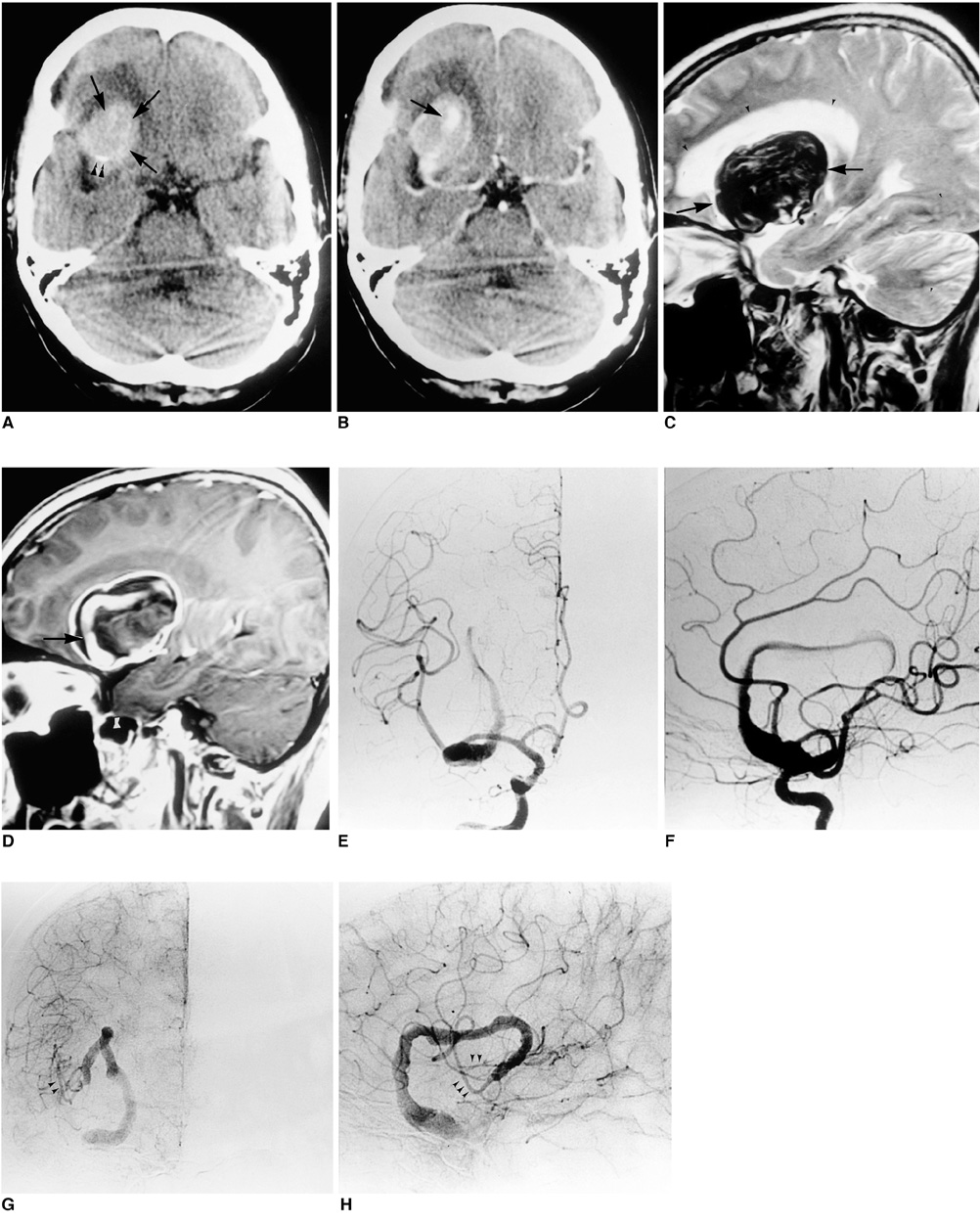Korean J Radiol.
2001 Sep;2(3):179-182. 10.3348/kjr.2001.2.3.179.
Giant Serpentine Intracranial Aneurysm: A Case Report
- Affiliations
-
- 1Department of Radiology, Wonju College of Medicine, Yonsei University Wonju Christian Hospital, Kangwon-do, Korea. cursor2@wonju.yonsei.ac.kr
- KMID: 754105
- DOI: http://doi.org/10.3348/kjr.2001.2.3.179
Abstract
- The authors present a case of giant serpentine aneurysm (a partially thrombosed aneurysm containing tortuous vascular channels with a separate entrance and outflow pathway). Giant serpentine aneurysms form a subgroup of giant intracranial aneurysms, distinct from saccular and fusiform varieties, and in this case, too, the clinical presentation and radiographic features of CT, MR imaging and angiography were distinct.
MeSH Terms
Figure
Cited by 1 articles
-
Endovascular Treatment of Giant Serpentine Aneurysm of the Middle Cerebral Artery
Young Ha Jeong, Jong Yeon Kim, Youn Moo Koo, Jong Wook Choi, Kum Whang, Chul Hu, Sung Min Cho
J Cerebrovasc Endovasc Neurosurg. 2016;18(3):264-270. doi: 10.7461/jcen.2016.18.3.264.
Reference
-
1. Segal HD, McLaurin RL. Giant serpentine aneurysm: Report of two cases. J Neurosurg. 1977. 46:115–120.2. Aletich VA, Debrun GM, Monsein LH, Nanta HJW, Spetzler RF. Giant serpentine aneurysms: a review and presentation of five cases. Am J Neuroradiol. 1995. 16:1061–1072.3. Tomasello F, Albanese V, Cioffi FA. Giant serpentine aneurysms: a separate entity. Surg Neurol. 1979. 12:429–432.4. Fodstad H, Liliequist B, Wirell S, Nilsson PE, Boquist L, Abdul-Rahman A. Giant serpentine intracranial aneurysm after carotid ligation: case report. J Neurosurg. 1978. 49:903–909.5. Haddad GF, Haddad FS. Cerebral giant serpentine aneurysm: case report and review of the literature. Neurosurgery. 1988. 23:92–97.6. Belec L, Cesaro P, Brugieres P, Gray F. Tumor-simulating giant serpentine aneurysm of the posterior cerebral artery. Surg Neurol. 1988. 29:210–215.7. Vishteh AG, Spetzler RF. Evolution of a dolichoectatic aneurysm into a giant serpentine aneurysm during long-term follow up: case illustration. J Neurosurg. 1999. 91:346.
- Full Text Links
- Actions
-
Cited
- CITED
-
- Close
- Share
- Similar articles
-
- Giant Serpentine Intracranial Aneurysm Treated with Wrapping under the Extracorporeal Circulation and Hypothermia
- Giant Serpentine Aneurysm of the Middle Cerebral Artery
- Giant Serpentine Aneurysm of the Anterior Communicating Artery: Case Report
- Giant Serpentine Aneurysm of the Posterior Cerebral Artery: Case Report
- Endovascular Treatment of Giant Serpentine Aneurysm of the Middle Cerebral Artery


